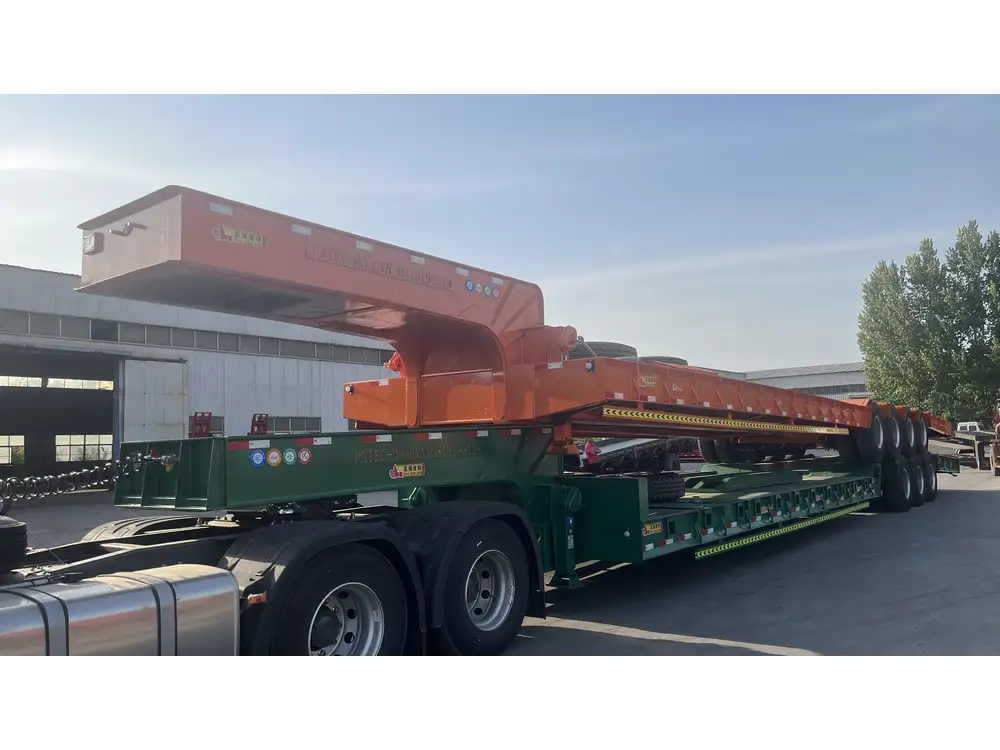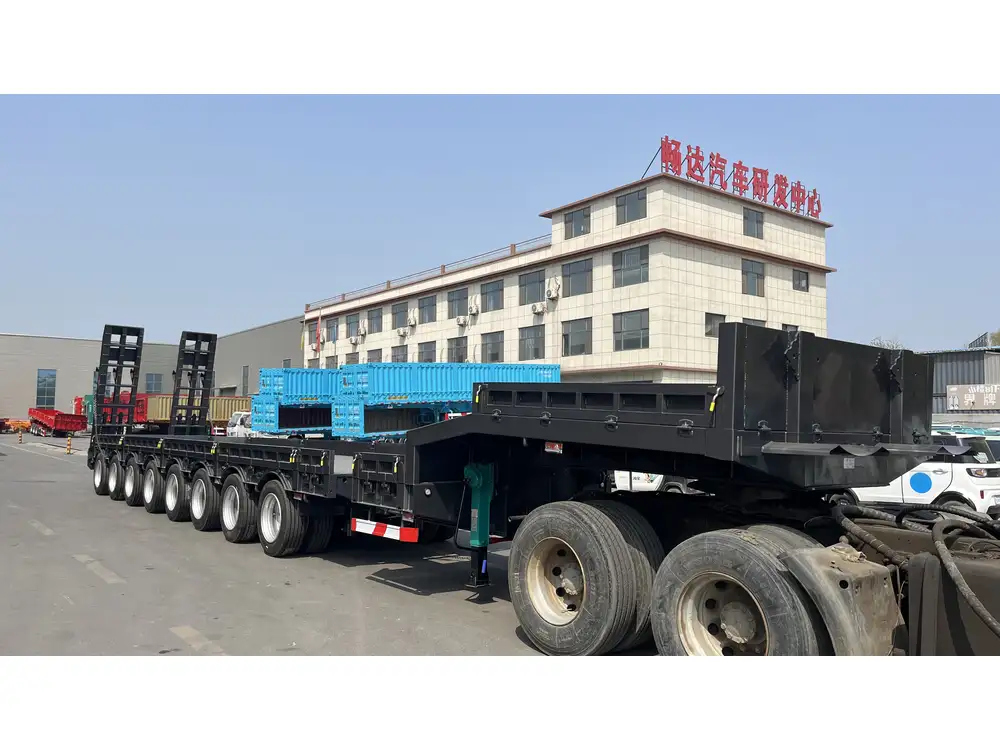Introduction: The Critical Function of Inspections in Transportation
In the complex ecosystem of logistics and transportation, the safety and security of goods in transit is paramount. Within this framework, the Transportation Security Administration (TSA) plays an instrumental role, ensuring that both container shipments and truck trailers are inspected thoroughly. The ever-increasing volume of cross-border trade and domestic freight traffic underscores the necessity of robust inspection protocols to mitigate potential risks.
This article delves into the TSA’s responsibilities regarding inspections, the processes involved, and how manufacturers and logistics providers can align with these standards for efficient, compliant operations.
The TSA and its Mandate

Overview of the TSA
Founded post-9/11, the TSA was established to enhance security across various modes of transportation, encompassing air, land, and maritime. Its primary objective is to protect passengers and cargo from threats, including terrorism. With a diverse array of tasks, the TSA extends its jurisdiction to inspecting cargo transported via containers and truck trailers, highlighting their importance in national security.
TSA’s Regulatory Framework
The TSA operates under a comprehensive regulatory framework, which includes directives from federal laws such as the Aviation and Transportation Security Act (ATSA). These regulations dictate how cargo security is managed. This framework is critical for manufacturers and logistics providers in understanding their roles and responsibilities concerning safety and inspection protocols.
Container Inspections: The Process

The Role of Container Security
Containers are the backbone of international trade, transporting a vast array of goods worldwide. Secure container transport is imperative to prevent the smuggling of contraband and ensure that dangerous materials do not reach the public. The TSA collaborates closely with other federal agencies such as Customs and Border Protection (CBP) and the U.S. Coast Guard to execute thorough inspections.
Steps Involved in Container Inspections
The inspection of cargo containers involves several rigorous steps:
Pre-Arrival Risk Assessments
- Prior to a container’s arrival, the TSA performs risk assessments based on a variety of data points, including the shipping route, cargo type, and historical data for the exporting country.
Verification of Container Seals
- Once a container arrives at the port, seals are inspected for tampering. An intact seal indicates that the container has not been compromised during transit.
Physical Inspections
- Containers may undergo physical inspections by officers, which can include X-ray scans, radiation detection, or full-container inspection depending on the risk score of the shipment.
Collaboration with Other Agencies
- The TSA works in coordination with various agencies to ensure that potential issues are flagged and addressed promptly.
Compliance with International Guidelines
- Inspections align with international security guidelines established by the World Customs Organization (WCO) and the International Maritime Organization (IMO).
Recent Advancements in Container Inspection Technology
Technological innovations have revolutionized container inspections. High-tech scanning devices, robotics, and drones have enhanced detection capabilities, allowing for more thorough examinations without significantly delaying shipping times. For example, the use of non-intrusive inspection (NII) systems minimizes the need for manual inspections while increasing accuracy.

Truck Trailer Inspections: Ensuring Ground Transportation Security
The Importance of Truck Trailer Examination
Truck trailers are vital in domestic freight movements, often serving as the final mile of delivery. Given that these trailers transport essential goods, their inspections contribute significantly to public safety and security.
Process of Truck Trailer Inspections
Pre-Trip Inspection Protocols
- Before embarking on a journey, drivers are instructed to perform pre-trip inspections. This includes examining brakes, lights, tires, and the overall condition of the trailer.
Enforcement through Weigh Stations
- During transit, truck trailers may be subject to inspections at weigh stations. Inspectors check for compliance with weight regulations and may randomly select vehicles for more in-depth evaluations.
Post-Accident Inspections
- Should an accident occur, a thorough inspection of the truck trailer and its cargo is paramount to determine the cause and evaluate compliance with regulatory standards.

Ensuring Compliance with TSA Standards
To maintain compliance with TSA regulations, trucking companies need to ensure the following:
- Adequate training for drivers on security measures.
- Strict maintenance schedules for vehicles and trailers.
- Implementation of best practices for cargo securement to prevent shifts during transit.
The Regulatory Landscape Surrounding Inspections
Understanding Federal Regulations
The TSA adheres to specifications laid out in several federal regulations, including:
- 49 CFR Part 1540: This code governs air transportation and includes provisions related to the transportation of hazardous materials in rail and truck transport.
- 49 CFR Part 1542: These regulations address security requirements for train and truck transportation, mandating regular inspections to ensure safety.

The Role of Industry Standards
In addition to federal regulations, many organizations, such as the American Trucking Association (ATA), regularly publish best practices and guidelines aimed at enhancing the security of cargo transport. Manufacturers and logistics providers must align with industry standards to retain operational legitimacy and public trust.
Addressing User Concerns: Frequently Asked Questions
Who is Responsible for Inspections?
The TSA is primarily responsible for conducting inspections on containers and truck trailers, in tandem with other bodies like CBP and the U.S. Coast Guard.

What are the Consequences of Non-Compliance?
Failure to adhere to inspection protocols can result in severe penalties, including hefty fines, criminal charges, and revocation of your transportation operating license. Moreover, it may lead to a damaged reputation, hindering future business opportunities.
How Can Manufacturers Improve Compliance?
Manufacturers can implement the following measures to enhance compliance:
- Invest in Training: Regular training programs for drivers and logistics personnel can promote adherence to inspection protocols.
- Utilize Tracking Technology: Incorporating GPS and electronic seals can enhance the security of cargo.
- Engage with Regulatory Bodies: Staying informed about updates to TSA regulations can ensure compliance and aid in risk management.
What Should Be Done When Unusual Activity is Detected?
Immediate reporting of any anomalies to the TSA and local law enforcement is vital. Engaging a compliance professional may also assist in navigating the implications of unusual incidents or inspections.

Future Trends in Inspections
Increasing Automation
The future of container and trailer inspections is leaning significantly towards automation. Emerging technologies like AI and machine learning algorithms can analyze patterns and predict potential risks, providing a more efficient inspection process.
Emphasis on Cybersecurity
As logistics becomes more digital, the focus on cybersecurity for logistics operations has intensified. Data breaches can compromise cargo security, necessitating rigorous IT security protocols alongside traditional physical inspection methods.

Sustainability and Environmental Compliance
Modern regulations are increasingly weighing sustainability and environmental compliance as a part of the inspection process. This trend underscores the importance of evaluating the environmental impact of logistics operations alongside traditional safety metrics.
Conclusion: Reinforcing the Role of Partnerships and Collaboration
In an intricate web of logistics, the intersection of security, compliance, and efficiency is crucial. Stakeholders ranging from manufacturers to transportation service providers must establish and nurture partnerships with regulatory bodies like the TSA. Emphasizing proactive communication, continuous education, and technological adaptation can streamline inspections, promote public safety, and ultimately drive operational success.
By understanding the nuances of TSA’s role in container and truck trailer inspections, industry participants can better align their practices with regulatory demands, thereby fortifying their business operations against potential threats. The logistics landscape is ever-evolving, and those who remain vigilant and responsive to these changes will thrive in a competitive environment.
This comprehensive exploration of the TSA’s inspection processes and regulatory frameworks represents a commitment to transparency and safety in the transportation sector, beneficial not only to industry professionals but also to consumers relying on secure supply chains.



